| Vocademy |
Thevenin's Theorem
| As already determined above, there is a 30 volt drop across the 10 ohm resistor, leaving 30 volts across the 15 ohm and 30 ohm resistors. | 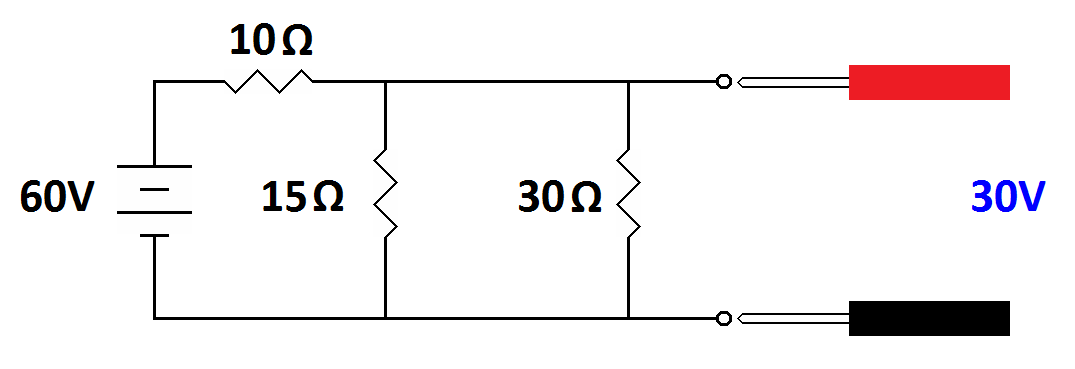 Open circuit voltage
|
| Placing a current meter across the 15 ohm and 30 ohm resistors creates a short circuit (a current meter has nearly 0 ohms). This eliminates those two resistors from the circuit,[1] placing the entire 60 volts from the battery across the 10 ohm resistor. The result is a current of 6 amps through the circuit. | 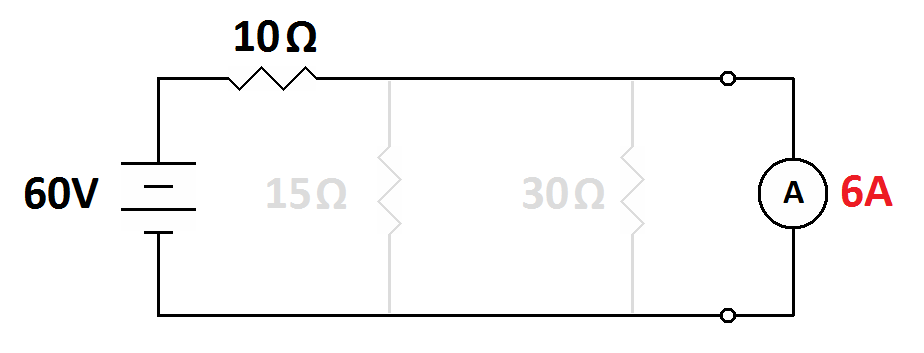 Short circuit current
|
| Therefore, looking at the points shown, with an open circuit voltage of 30 volts and a short circuit current of 6 amperes, the circuit acts exactly the same as a single 5 ohm resistor in series with a 30 volt battery. | 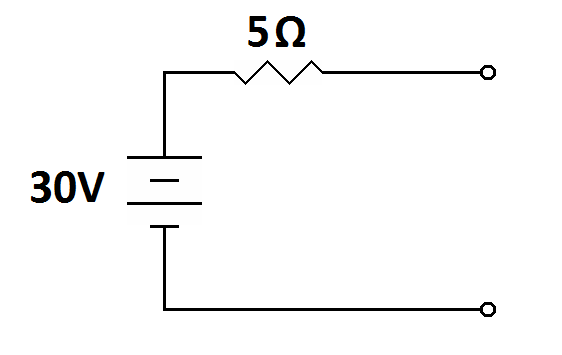 Thevenin equivalent circuit
|
Note that the final Thevenin equivalent circuit is reminiscent of Georg Ohm's voltage source, with the resistance applied in series with the source of electromotive force. We will visit this in a moment after discussing output impedance.
Output impedance
Internal Resistance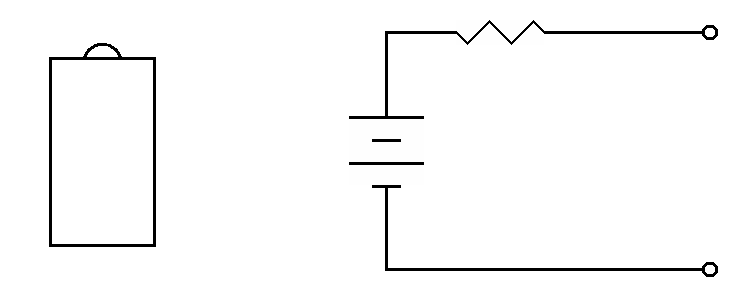 Battery
Equivalent Circuit Battery
Equivalent Circuit |
|
Output Impedance 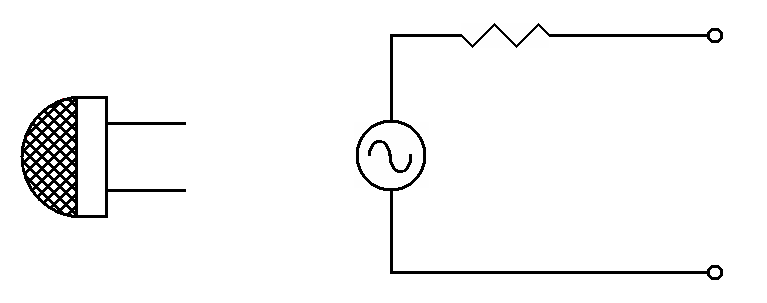 Microphone Equivalent Circuit |
| Thevenin equivalent circuits for a battery and a microphone. Each consists of a voltage source with a resistor in series. The voltage source for the battery is DC and is symbolized by a battery where the voltage source for the microphone is symbolized by an AC generator. |
Note again that the battery's internal resistance is applied in series with the voltage source. Likewise, the output impedance of the microphone is applied in series with the AC voltage source. This clarifies a common mistake made by new students. Let's say you have a 10-volt battery with a known internal resistance of one ohm. If you apply 10 volts across one ohm, according to Ohm's Law, you should get 10 amperes of current. Why doesn't the battery discharge through its own internal resistance? The internal resistance must be applied in series with the source of electromotive force. Therefore, there is no path for current unless the battery terminals are connected together. Whenever you have a source of electromotive force, any inherent impedance in that source must be applied in series with the source. Some influencers have tried to invalidate Ohm's Law and Kirchhoff's Voltage Law not understanding this principle. Don't fall into that trap.
Input impedance
At the beginning of the public address system, the microphone connects to a preamplifier. The input of the preamplifier exhibits some opposition to electrical current flow (impedance) as does any circuit. The impedance seen at the input of a circuit is called input impedance. Just as the output impedance of the microphone can be represented by a resistor, the input impedance of the preamplifier can also be represented by a resistor. Therefore, the part of the system that consists of the microphone and the input of the preamplifier can be represented with the Thevenin equivalent circuit of the microphone connected to a resistor that represents the input impedance of the amplifier.

| Equivalent circuits showing a microphone connected to the input of a preamplifier. The entire preamplifier is represented by a resistor with a value equal to the preamplifier's input impedance. |
No matter how complex the actual circuits may be, they can be represented by the simple series circuit above.
Thevenin's Theorem, Output Impedance and Input Impedance
| Vocademy |